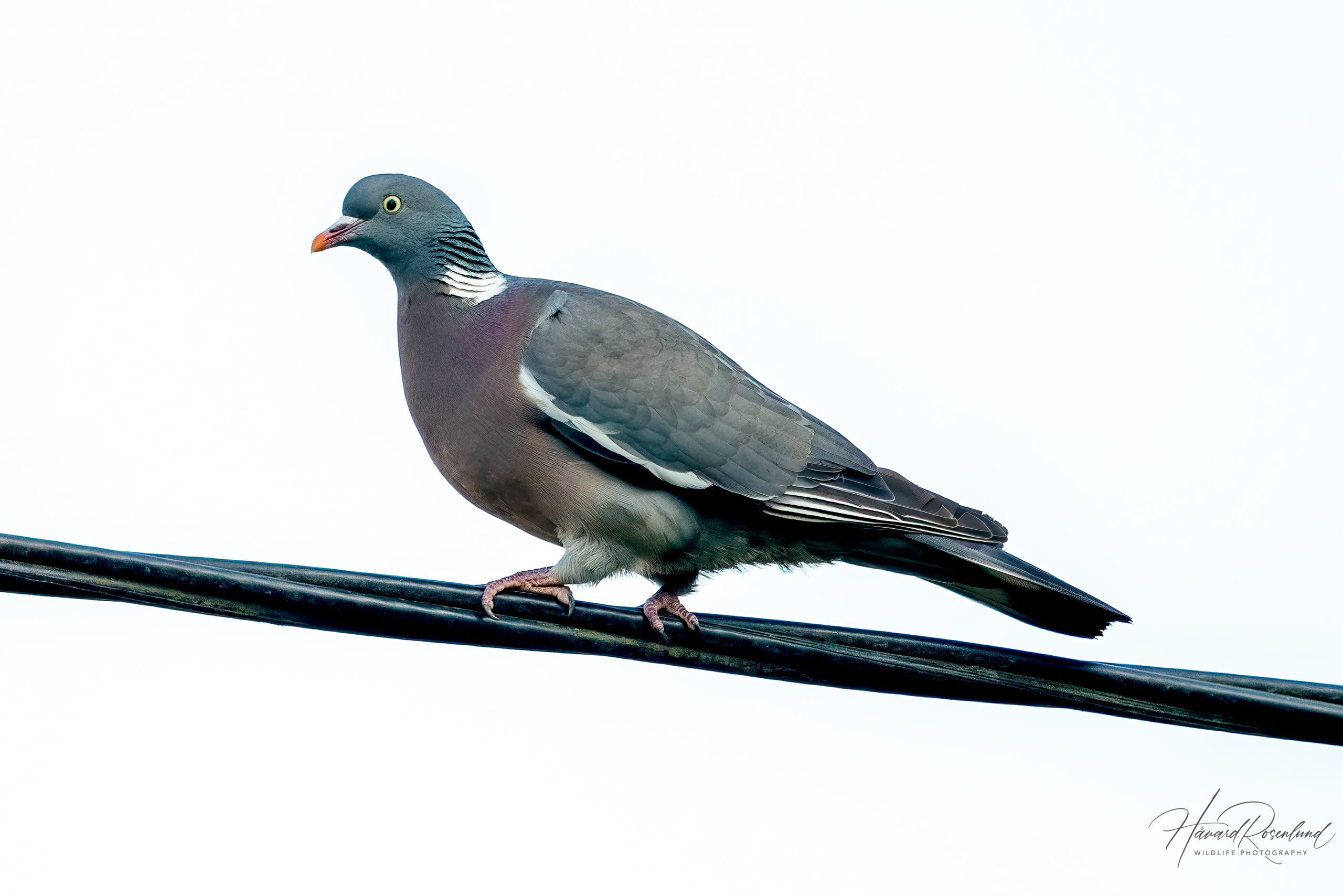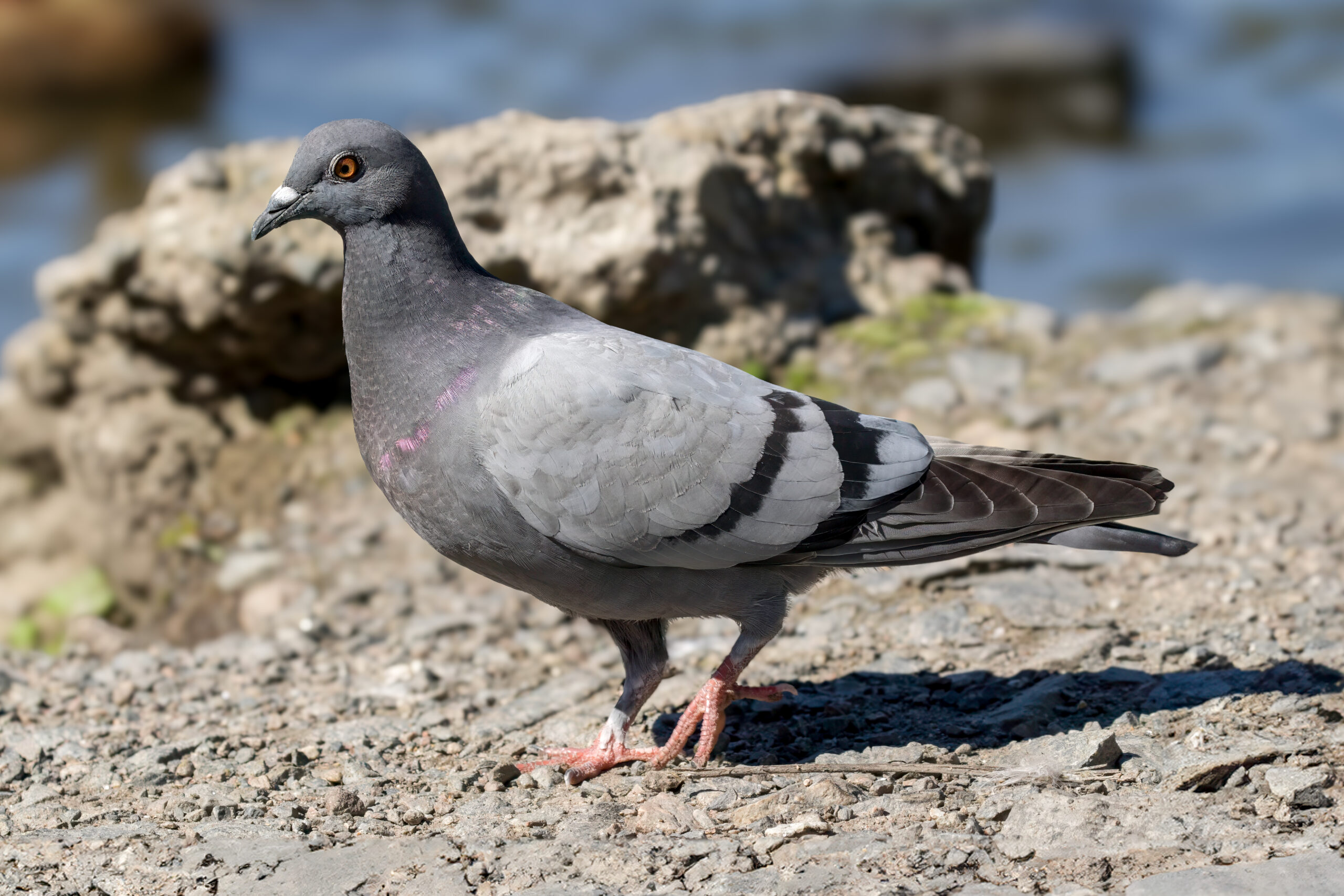Description
The common wood pigeon (Columba palumbus) is a large, plump pigeon found across Europe, North Africa, and western Asia. It measures 41 to 45 cm (16.1-17.7 in) in length and weighing between 300 to 600 grams (10.6-21.1 oz). It has a distinctive white patch on the side of its neck, a pinkish breast, and a bluish-grey body. The wings have a notable white edge that becomes even more visible during flight. It is similar to the stock dove (Columba oenas), which is somewhat smaller, lacks the white patch on the neck and the white edge on the wings. Young wood pigeons also lack the white neck patch, and the white edge on the wings then helps separate the two species. The stock dove is also more secretive and less often seen in urban and suburban environments.
Diet & habitat
Common wood pigeons feed mainly on seeds, leaves, and crops, making farmlands, gardens, parks, and woodlands their preferred habitats. They often feed on the ground in groups and have adapted well to urban areas where they can be seen foraging for food. Their ability to consume a wide variety of plant material allows them to inhabit a diverse range of environments, from dense forests to open agricultural land.
Migration
The common wood pigeon is partially migratory. Birds from the northernmost parts of their range in Scandinavia and Eastern Europe migrate southwards to spend the winter in warmer regions. However, populations in milder western and southern Europe are generally resident throughout the year, showing local movements in response to food availability.
Nesting
Breeding season varies by region, starting as early as March in some areas and continuing into the summer. Wood pigeons nest in trees and large bushes, with the female laying 1 to 2 eggs per clutch. Both parents share incubation duties over a period of about 17 days. Chicks, known as squabs, fledge approximately 30 to 35 days after hatching but remain dependent on their parents for a short while longer. Wood pigeons can raise two broods in one breeding season.
Status
The common wood pigeon has a large range and population numbers are increasing. It is listed as least concern on the IUCN Red List. While it faces no major threats, it is often managed as a pest species in agricultural areas due to its feeding habits.










